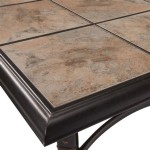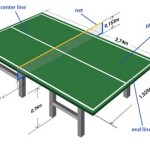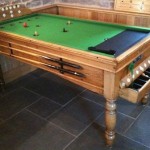How to Build a Massage Table
Building a massage table offers a cost-effective and customizable alternative to purchasing commercially available models. A self-built table allows for tailoring the dimensions, materials, and features to specific needs and preferences. While the project requires basic carpentry skills and access to tools, the result is a sturdy and personalized piece of equipment.
This article provides a comprehensive guide to constructing a functional and durable massage table. It outlines material selection, step-by-step construction procedures, and considerations for safety and comfort.
Planning and Material Selection
Before commencing construction, a detailed plan is crucial. Consider the intended user's height and weight, the desired table dimensions (length, width, and height), and any specific features such as an adjustable headrest or armrests. Standard massage table dimensions typically range from 72 to 84 inches in length, 28 to 30 inches in width, and 24 to 34 inches in height. Adjust these measurements to accommodate individual requirements.
Material selection impacts the table's stability, weight, and longevity. The frame, responsible for supporting the weight, requires sturdy and durable wood. Hardwoods such as maple, oak, or birch are excellent choices, offering strength and resistance to warping. Softwoods like pine can be used if budget is a primary concern, but they may require additional reinforcement.
For the tabletop, plywood is a common and cost-effective option. Select high-quality plywood with a smooth surface and minimal voids. A thickness of ¾ inch is generally sufficient for adequate support. Alternatively, solid wood can be used for the tabletop, but it may be more expensive and prone to expansion and contraction with changes in humidity.
Foam padding is essential for providing comfort. High-density foam at least 2 inches thick is recommended. Consider using multiple layers of different densities, such as a softer top layer over a firmer base layer, to achieve optimal support and pressure distribution. Upholstery fabric should be durable, easy to clean, and resistant to staining. Vinyl and synthetic leather are popular choices due to their durability and waterproof properties. Natural fabrics like cotton can be used, but they require more frequent cleaning and are more susceptible to damage.
Other necessary materials include wood screws, wood glue, hinges (for folding tables or adjustable features), staples (for upholstery), and finishing products such as varnish or polyurethane to protect the wood.
Frame Construction
The frame provides the structural foundation of the massage table. Accuracy and precision in the frame construction are paramount to ensure stability and prevent wobbling.
Begin by cutting the frame components according to the planned dimensions. This typically includes four side rails and two end rails. Ensure that all cuts are square and accurate to prevent misalignment during assembly. Use a miter saw or circular saw for precise cuts.
Assemble the frame using wood glue and screws. Apply glue to the joints and clamp the pieces together until the glue dries. Then, secure the joints with screws. Countersink the screws to prevent them from protruding above the surface of the wood. Reinforce the corners of the frame with corner braces or metal angles for added strength.
Construct the legs of the table. The number of legs depends on the table's length and intended weight capacity. Generally, four legs are sufficient for shorter tables, while longer tables may require six or more legs for adequate support. The legs should be made from the same wood as the frame for consistent strength and appearance. Attach the legs to the frame using wood glue and screws, ensuring that they are perpendicular to the frame. Reinforce the leg attachments with metal brackets for enhanced stability.
For a folding massage table, hinges must be appropriately selected and installed. Piano hinges, which run the entire length of the folding joint, provide greater stability. Accurate alignment is critical for smooth and reliable folding. Ensure the hinges are securely attached to both frame sections.
Tabletop Construction and Upholstery
The tabletop provides the surface upon which the client will lie. Its construction involves attaching the plywood or solid wood to the frame and then applying the foam padding and upholstery.
Cut the plywood or solid wood to the desired tabletop dimensions. The tabletop should be slightly larger than the frame to allow for overhang on all sides. Smooth the edges of the tabletop with sandpaper to prevent sharp edges.
Attach the tabletop to the frame using wood glue and screws. Apply glue to the top surface of the frame and then position the tabletop on top. Secure the tabletop to the frame with screws, ensuring that the screws are evenly spaced and do not protrude through the top surface. Countersink the screws and fill the holes with wood filler for a smooth finish.
Adhere the foam padding to the tabletop using spray adhesive. Cut the foam padding to the same dimensions as the tabletop. Apply a thin, even layer of spray adhesive to both the tabletop and the foam padding. Allow the adhesive to become tacky before attaching the foam to the tabletop. Smooth out any wrinkles or bubbles in the foam.
Upholstering the massage table involves wrapping the foam-padded tabletop with the chosen fabric. Cut the upholstery fabric to a size that is sufficient to cover the entire tabletop and wrap around the sides and bottom. Allow for extra fabric to ensure sufficient overlap for secure attachment.
Begin stapling the fabric to the bottom of the tabletop, starting in the center of one side and working outwards towards the corners. Pull the fabric taut as you staple to ensure a smooth and wrinkle-free surface. Fold the corners neatly and securely staple them in place. Use a staple gun with the appropriate staple size for the thickness of the fabric and the wood.
Trim any excess fabric and secure the edges with staples or glue to prevent fraying. Ensure all staples are flush with the wood to avoid scratching or discomfort.
Adding Features and Finishing
The final stage involves adding desired features such as an adjustable headrest or armrests, and applying a protective finish to the wood.
An adjustable headrest can be constructed using a separate piece of plywood or solid wood, hinged to the main tabletop. A ratcheting mechanism or adjustable strap system can be used to adjust the angle of the headrest. Upholster the headrest with foam and fabric to match the tabletop.
Armrests can be added to the sides of the table for increased comfort. These can be either fixed or adjustable. Fixed armrests can be constructed from wood and covered with foam and fabric. Adjustable armrests typically utilize metal brackets and locking mechanisms for height and angle adjustment. Ensure that the armrests are securely attached to the frame.
Apply a protective finish to the wood frame and legs. Varnish or polyurethane provide a durable and water-resistant finish. Sand the wood surfaces smooth before applying the finish. Apply multiple coats of finish, allowing each coat to dry completely before applying the next. Follow the manufacturer's instructions for application and drying times. Allow sufficient ventilation during the finishing process.
Consider adding non-slip feet to the legs of the table to prevent it from sliding on smooth surfaces. These can be purchased at hardware stores and attached to the bottom of the legs with screws or glue.
Thoroughly inspect the massage table for any sharp edges, loose staples, or other potential hazards. Smooth any rough edges with sandpaper. Test the table for stability and weight capacity before using it with clients. Ensure the folding mechanism (if applicable) operates smoothly and locks securely.

6 How To Build A Stationary Massage Table Diy Plans

Portable Massage Table Construction Plans Bill S

A Build Your Own Inexpensive Massage Table Plan

Portable Massage Table Construction Plans Bill S

A Build Your Own Inexpensive Massage Table Plan

Portable Massage Table And Or Pelvic Bench Tables Bed

Workout Therapy Table Build Diy Home Gym Pt A

How To Build A Career In Massage Therapy Ncc

Free Diy Furniture Plans To Build A Pottery Barn Inspired Kelty Coffee Table The Design Confidential

13 Diy Massage Table Plan How To Make A








